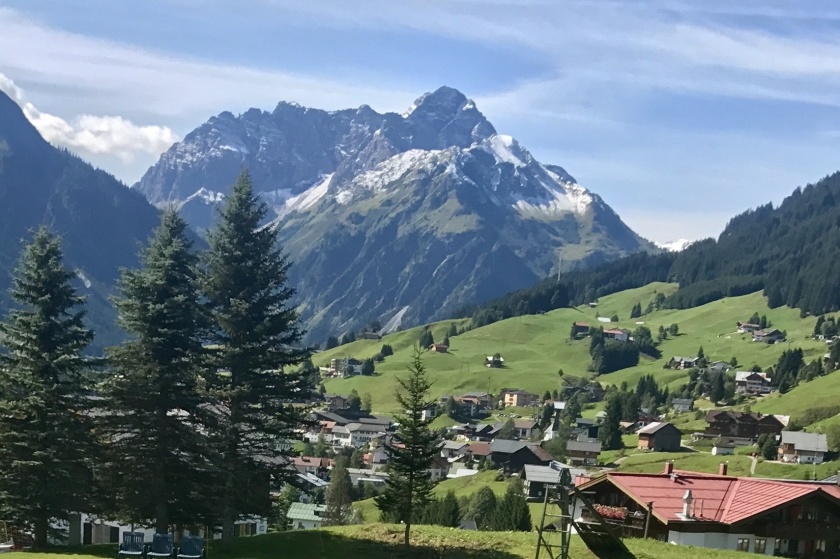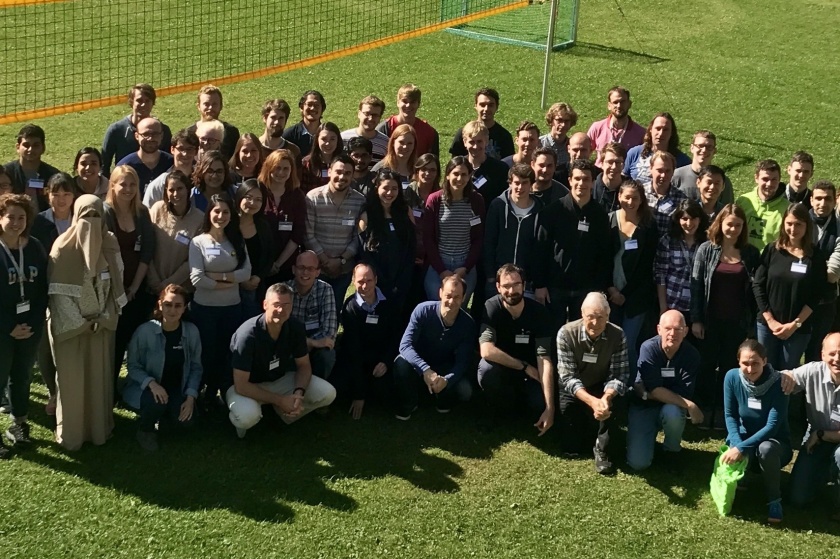Registration for Summer School Quantsol is now open!

The Quantsol will be held from 2. to 9. September 2018 in Hirschegg, Kleinwalsertal, Austria.
© K.Lips /HZB

Learning about solar fuels and photovoltaics goes green: Last year’s Quantsol students came from all over the world to meet solar energy experts in the Austrian Alps. The location offers space for 56 students. © K. Lips /HZB
It is already the eleventh time that the International Summer School on Photovoltaics and New Concepts of Quantum Solar Energy Conversion (Quantsol) will be held from 2. to 9. September 2018 in Hirschegg, Kleinwalsertal, Austria. The school is organized by the Helmholtz-Zentrum Berlin and the Technical University of Ilmenau. Applications can be submitted through the school’s homepage until May 18th , 2018.
“The Quantsol summer school offers a very comprehensive introduction to the field of photovoltaics and photocatalysis and is a great learning experience and a “must attend” for PhD students and postdocs in their early career. In the past, we have received an overwhelmingly positive feedback leading to oversubscription of the school every year” says Prof. Dr. Klaus Lips from Helmholtz-Zentrum Berlin.
Invited speakers, all internationally recognized scientists from leading world institutions, will give lectures covering topics on the fundamental principles of the conversion of solar energy into chemical and electrical energy as well as the physical and technical challenges of their technological implementation. Another focus lies on solar-specific material science and their characterization. In addition, the school will give hands-on training on how to build your own solar cell as well as an introduction to solar cell simulation.
If you are interested to participate in the Quantsol Summer School you can find much more detailed information on our homepage or in our flyer (download right).
The deadline for application is May 18, 2018.
Here you get directly to the application form.
If you will not be able to attend this years’ Quantsol summer school – no worries - the next school has already scheduled for September 1 to 8, 2019.
HZB
https://www.helmholtz-berlin.de/pubbin/news_seite?nid=14810;sprache=en
- Copy link
-
The twisted nanotubes that tell a story
In collaboration with scientists in Germany, EPFL researchers have demonstrated that the spiral geometry of tiny, twisted magnetic tubes can be leveraged to transmit data based on quasiparticles called magnons, rather than electrons.
-
Bright prospects for tin perovskite solar cells
Perovskite solar cells are widely regarded as the next generation photovoltaic technology. However, they are not yet stable enough in the long term for widespread commercial use. One reason for this is migrating ions, which cause degradation of the semiconducting material over time. A team from HZB and the University of Potsdam has now investigated the ion density in four different, widely used perovskite compounds and discovered significant differences. Tin perovskite semiconductors produced with an alternative solvent had a particular low ion density — only one tenth that of lead perovskite semiconductors. This suggests that tin-based perovskites could be used to make solar cells that are not only really environmentally friendly but also very stable.
-
Synchrotron radiation sources: toolboxes for quantum technologies
Synchrotron radiation sources generate highly brilliant light pulses, ranging from infrared to hard X-rays, which can be used to gain deep insights into complex materials. An international team has now published an overview on synchrotron methods for the further development of quantum materials and technologies in the journal Advanced Functional Materials: Using concrete examples, they show how these unique tools can help to unlock the potential of quantum technologies such as quantum computing, overcome production barriers and pave the way for future breakthroughs.
